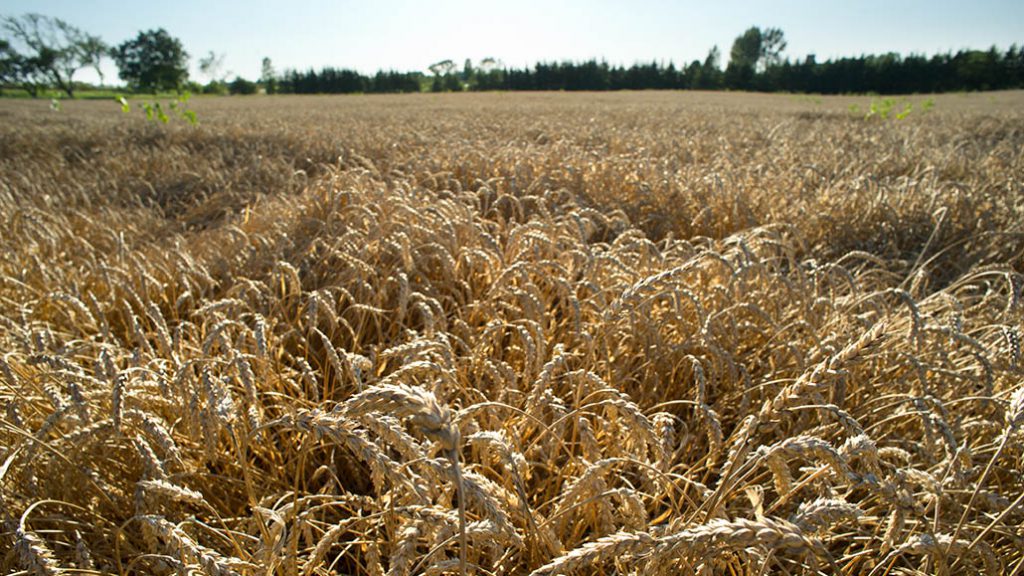Genetically modified wheat?
BREAKTHROUGH DEVELOPMENT FOR CELIACS

ONE OF THE public’s long-time raps against genetically modified crops is that their main benefits have accrued to farmers, not consumers. But an international breakthrough in wheat breeding aimed at helping celiac disease sufferers could ultimately change that: researchers have now developed genetically modified wheat, with a clear functional component related to human health.
In January, a research team led by Washington State University and Clemson University, along with partner institutions in Chile, China, and France, unveiled a new genotype of wheat containing genetically engineered enzymes – one from barley and another from a bacteria Flavobacterium meningosepticum.
These enzymes are designed to break down the proteins that cause some people’s immune reaction to gluten (the protein that gives breads, pasta, and cereal their chewy, crunchy texture). That reaction causes painful celiac disease, a breakdown of the nutrient-absorbing villi in the small intestine. Nausea, cramps, malnutrition, and other health problems characterize celiac disease, named after the Greek word for abdomen, “koelia”.
As part of their research, the team mimicked the human body’s digestive tract, and tested gluten extracts from the experimental GM grain. They found it had appreciably fewer levels of the disease-provoking proteins — and it reduced the amount of indigestible gluten by up to two thirds.
That’s a significant magnitude for celiac disease suffers. The Celiac Disease Foundation says 1.4 per cent of the global population have the affliction, and that having a parent with celiac disease gives you a one in 10 risk of developing it. Presently, the only treatment for celiac disease is to avoid foods made with wheat, or eat an enzyme supplement with every meal.
The researchers hope those days are over. They say their discovery, which was published in the January issue of Functional and Integrative Genomics, opens the door to new treatments for celiac disease and for new wheat crops with a built-in defense against the disease.
“By packing the remedy to wheat allergies and gluten intolerance right into the grain, we’re giving consumers a simpler, lower-cost therapy,” says lead author Sachin Rustgi, assistant professor of molecular breeding at Clemson University and adjunct assistant professor with WSU’s Department of Crop and Soil Sciences.
CONTROVERSY
GM wheat is a controversial topic, no matter where in the world you farm or do research. Confined research trials for GM wheat have been conducted in western Canada since the 1990s, and still are (in 2018, 52 field trials took place, all in Manitoba and Saskatchewan). But while there is agronomic potential for the crop, there is a lack of consensus among farmers about benefits and the public relations angle failed to gain steam. Exporters and many others in the wheat industry worry that GM varieties could jeopardize markets, especially in Europe.
In the U.S., Monsanto withdrew an application to the Environmental Protection Agency in 2014 for a GM wheat variety named MON 71800. Today, GM wheat is not authorized to be grown commercially in any country, including Canada.
Nonetheless, six volunteer GM wheat plants randomly popped up in Alberta in January 2018. That’s when the Canadian Food Inspection Agency (CFIA) was notified about what it called “a few” wheat plants found on an access road in the southern part of the province, that survived a spraying treatment for weeds.
The CFIA’s tests confirmed that the wheat was indeed genetically modified to be herbicide tolerant. However, its source was never found. CFIA confirmed it didn’t enter the food chain though, and made available the test to detect this specific GM wheat to its trading partners to test wheat imports.
CAUTION
Today, with Monsanto now part of Bayer, Trish Jordan, the company’s public and industry affairs director, continues urging caution.
“Science can do some amazing things,” she says, “and this is a great example of applying science to solve real-world issues for a consumer, but there are many other factors that have to be considered and solved before this technology could be introduced as a commercial option for farmers.”
She says although the international research team appears to have figured out a way for celiac sufferers to consume food products utilizing this wheat without potential harm, “getting it into the commercial stream would take the cooperation of many, such as the grain trade, farmers, and export customers, among them.”
And, of course, it would need to be commercialized. The new GM wheat genotype is still at the research stage, and has not been approved for sale. It could certainly have broad appeal to celiac sufferers, but Jordan predicts it would still be a small market, acreage-wise.
That would challenge the economics of it all. Jordan says proof of concept through regulatory approval usually takes eight to 10 years and costs $100 million-plus for a GM crop to be approved. Then, she adds, it needs to be approved in key export markets.
Further, in the field, this particular type of GM wheat would likely need to be grown under contract and segregated in a way to ensure purity to keep conventional wheat out. As well, says Jordan, cost and agronomics for the grower must also make sense — yields and premiums in particular. And what about food companies — would any be willing to take it on?
“If this wheat was developed using biotech, key export customers would have to be comfortable with a GMO wheat being grown alongside non-GMO wheat in either Canada or the U.S., and there would need to be a full understanding and confidence in the effectiveness of the segregation system,” she says. “Segregation and purity for this potential product would be absolutely critical.”
And then there’s the human side of this particular wheat, she says. “It’s a health and safety issue for celiac sufferers — the product must be perfect and contain no gluten. Everyone along the value chain would need to be comfortable and benefit for this to be successful.”
CHALLENGES
Dale Cowan, senior agronomist with AGRIS and Wanstead Co-op, likewise recognizes the challenges such a crop would endure getting to market. That said, he’s excited by the prospects of consumers accruing the benefit of a GM crop, and what it could mean to the overall acceptance beyond the farm gate of agricultural technology.
Farmers have long supported biotechnology, but consumers lag behind. New research by the Canadian Centre for Food Integrity shows GM crops are no more a concern than they have been for the past five years or so, but they’re still not what consumers consider local food — even though they might be growing in the field next door.
“I can understand the concerns of farmers over having to use certified seed when it comes to identity preserved wheat contracting and segregation, and the concerns of others who worry about the image of GMOs,” says Cowan. “But we know how to segregate speciality crops. We’ve been doing it for years with IP food grade soybeans. This could be a good opportunity for growers and at the same time provide consumers with a functional trait output. I see it as a positive development.” •


























